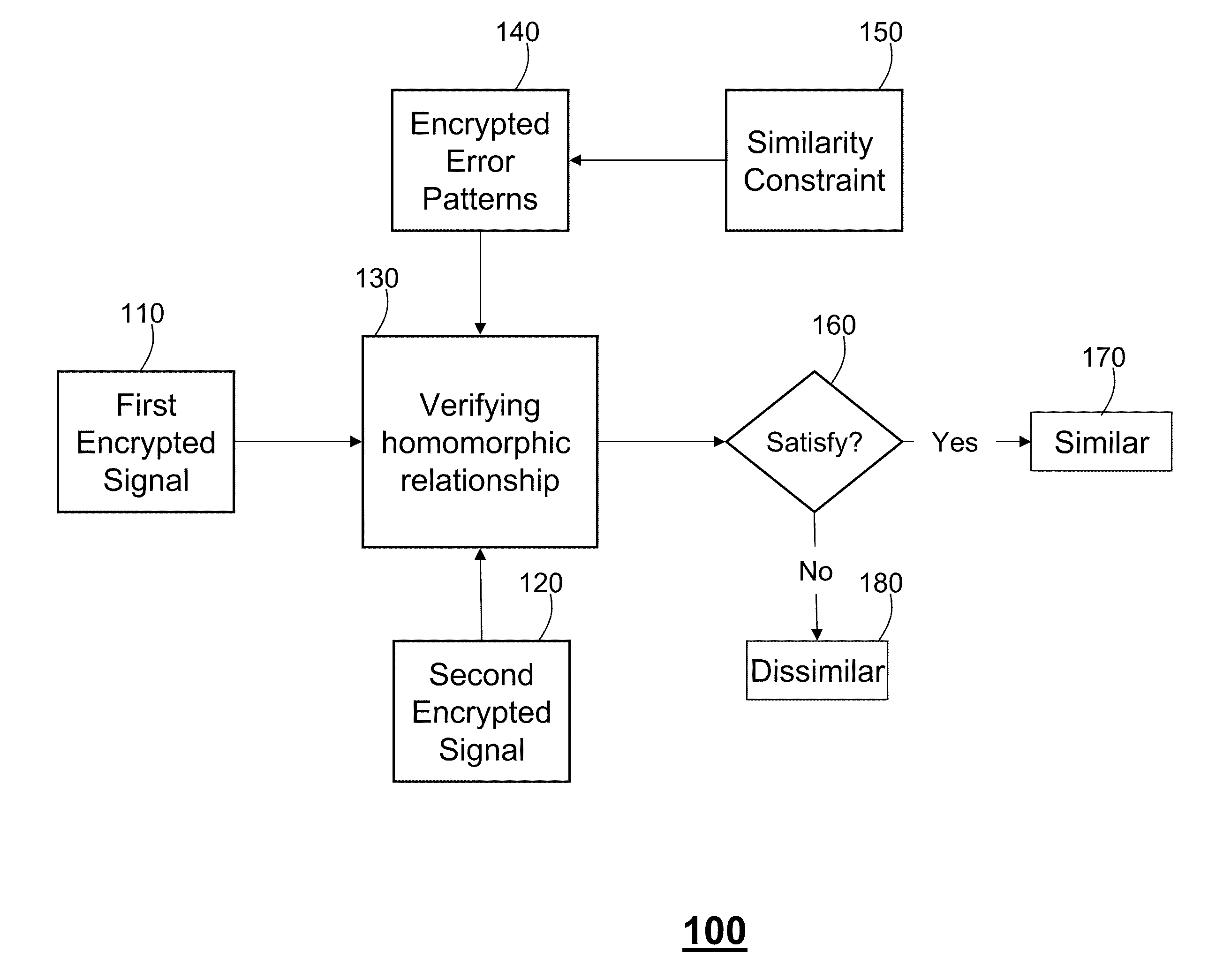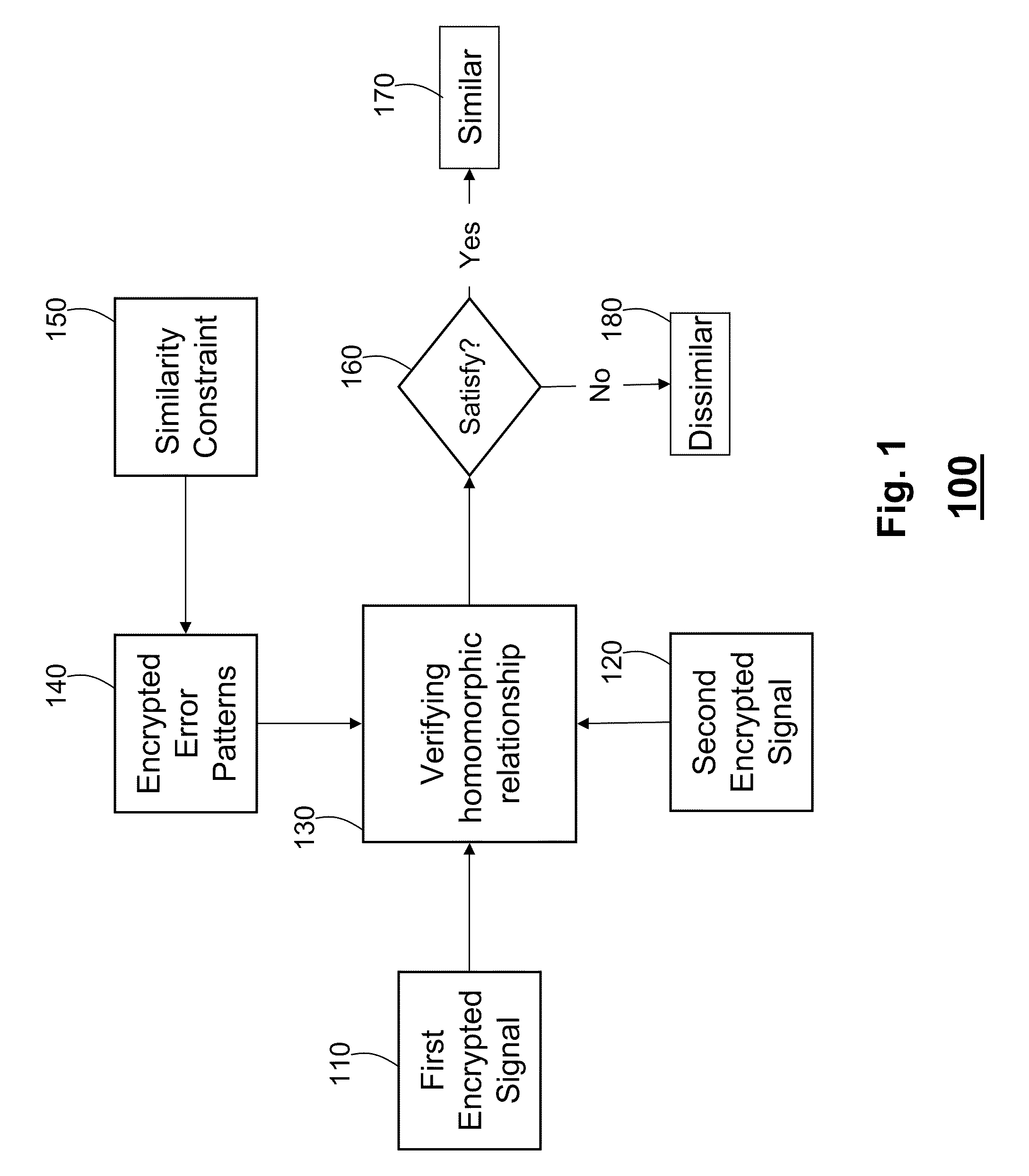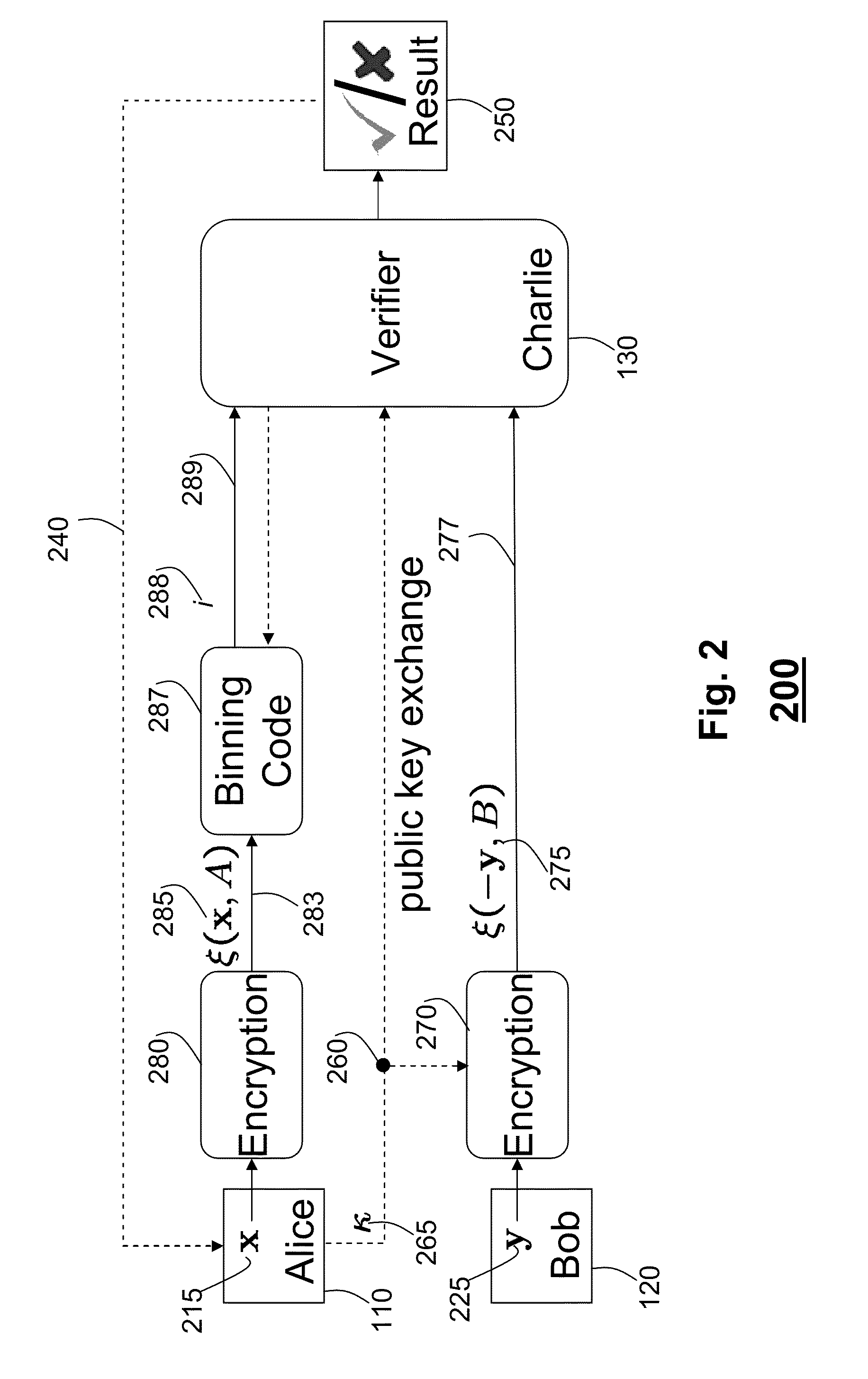Secure Similarity Verification Between Encrypted Signals
a technology of encrypted signals and similarity verification, applied in the direction of instruments, communication with homomorphic encryption, digital transmission, etc., can solve the problem that none of the parties wants to reveal any data to each other, and achieve the effect of reducing communication overhead
- Summary
- Abstract
- Description
- Claims
- Application Information
AI Technical Summary
Benefits of technology
Problems solved by technology
Method used
Image
Examples
example
[0071]Let D=3, meaning that x and y are compatible if and only if |x−y|≦3. Now let
={0,7,15,25,33,41,49,57,65,73,81,90,98,110,118,126}
Alice chooses two partitions of , namely C and C′, each having four bins as follows:
C1={0,81,110,49}
C2={33,57,15,90}
C3={7,126,41,73}
C4={118,998,65,25}
C′1={0,33,7,118}
C′2={81,57,126,98}
C′3={110,15,41,65}
C′4={49,90,73,25}
[0072]For the Paillier cryptosystem, choose p=1125899906846567, q=1125899906848559 and g=2. Thus N=pq=1267650600239351040776518046953. In this example, the chosen magnitude of p, q and N is small only for illustrative purposes. In other examples, N is very large and difficult to factorize. For convenience, Alice chooses A=11234565325115 and B=23456787867851 at random from the set {1, 2, . . . , N} as the parameters for Paillier encryption. She provides the value of B to Bob. Keeping the same partitions C and C′ as above, Alice encrypts the codebook entries using the parameter A, giving her the codebooks ξ(C, A) and ξ(C′, A) with the foll...
PUM
 Login to View More
Login to View More Abstract
Description
Claims
Application Information
 Login to View More
Login to View More - R&D
- Intellectual Property
- Life Sciences
- Materials
- Tech Scout
- Unparalleled Data Quality
- Higher Quality Content
- 60% Fewer Hallucinations
Browse by: Latest US Patents, China's latest patents, Technical Efficacy Thesaurus, Application Domain, Technology Topic, Popular Technical Reports.
© 2025 PatSnap. All rights reserved.Legal|Privacy policy|Modern Slavery Act Transparency Statement|Sitemap|About US| Contact US: help@patsnap.com



